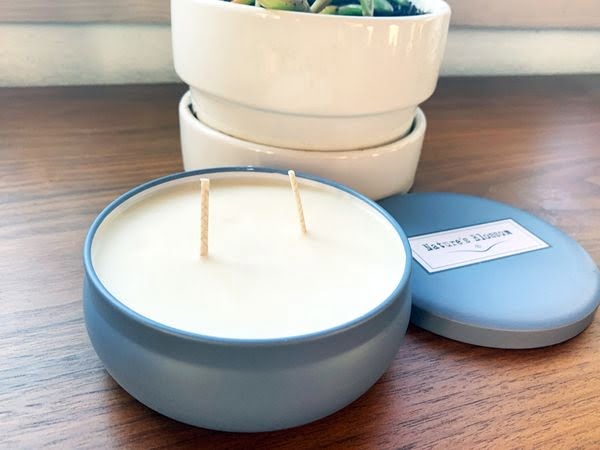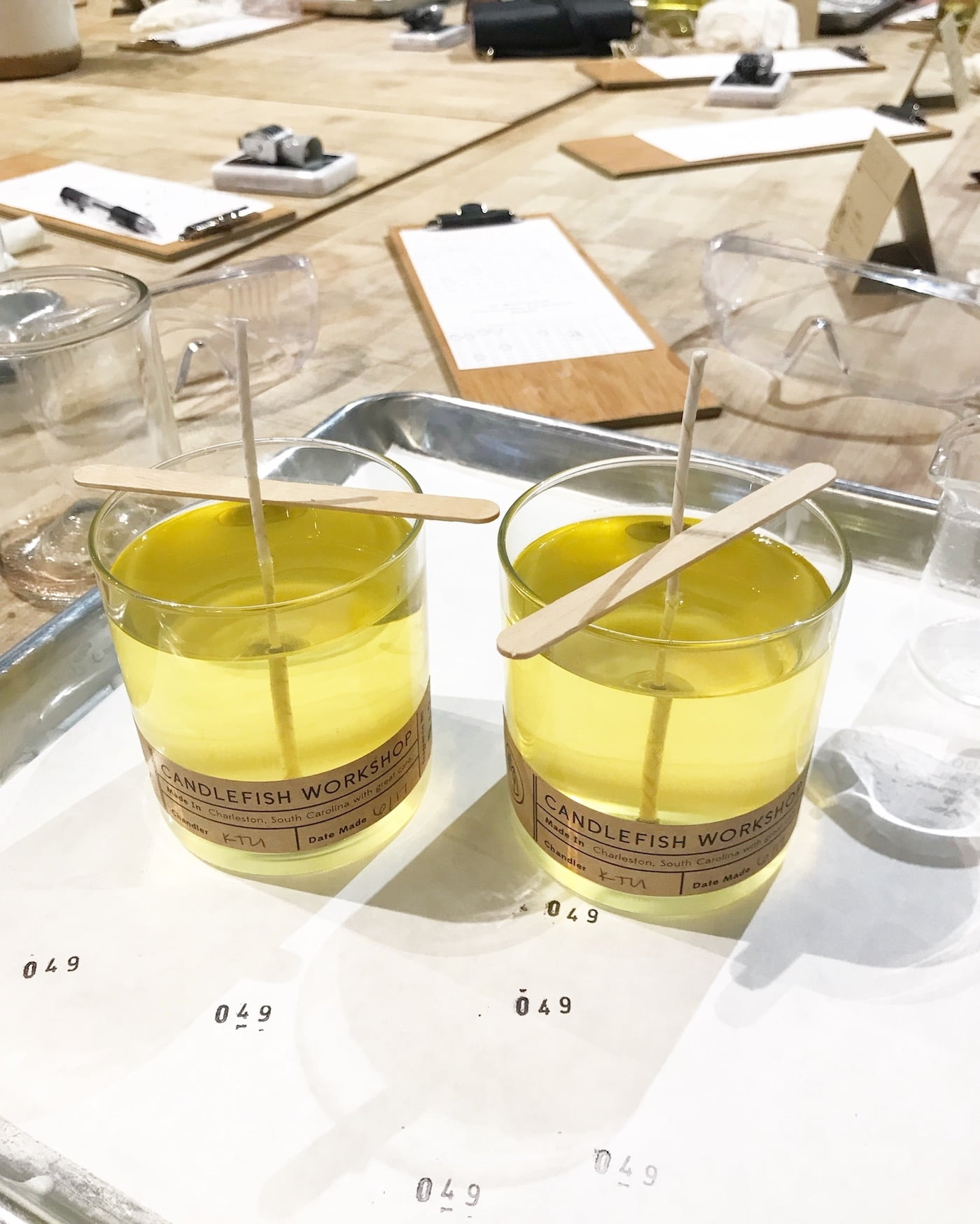Soy Candle Mold Making is a craft that combines both artistry and scientific precision to create beautiful and functional candle molds. Whether you are a hobbyist looking for a creative outlet or someone interested in starting their own business, soy candle mold making offers endless possibilities for unique and personalized candles.
In this article, we will explore the art and science behind soy candle mold making, taking you through the step-by-step process of creating your own molds. We will discuss the essential tools and materials needed, as well as provide tips and tricks for successful mold making.
Additionally, we will delve into the different types of soy candle molds available, from silicone to metal, highlighting their pros and cons. You’ll also discover creative ideas for unique designs that will set your candles apart from the rest.
If you’re new to soy candle mold making or have encountered common issues along the way, don’t worry. We have got you covered with troubleshooting tips to help overcome any challenges that may arise.
Finally, for those looking to take their skills to the next level, we will introduce advanced techniques and trends in soy candle mold making that will push your creativity boundaries even further.
So get ready to embrace the art and science of soy candle mold making and experience the joy of creating stunning candles that reflect your personal style. Let’s dive into this exciting world where imagination meets craftsmanship.
Understanding the Basics
Soy candle mold making is the process of creating molds specifically designed for pouring and shaping soy wax into candle forms. This technique allows candle makers to have full control over the size, shape, and design of their candles. Understanding the basics of soy candle mold making is essential for anyone interested in this craft.
At its core, soy candle mold making involves creating a mold that will hold the liquid wax until it solidifies and takes on the desired shape. The process typically starts with choosing a container or material to create the mold, such as silicone or metal. The chosen material should be able to withstand heat without melting or deforming.
Once the appropriate mold material is selected, it is important to consider various factors when designing the mold. These factors can include the size and shape of the intended final product, as well as any intricate details or patterns that may be desired. Taking these factors into account will help determine how many pieces will be needed to create a single soy candle mold.
The next step in soy candle mold making is to prepare the chosen material and pour hot liquid wax into it. This may require sealing seams or adding release agents to ensure easy removal of the hardened wax from the mold once it has set.
After pouring the wax, it must be left undisturbed until it cools and solidifies completely. Once cooled, the hardened molded wax can be removed from the mold, resulting in a finished soy candle in the desired shape.
Understanding the basics of soy candle mold making is crucial for beginners looking to experiment with creating their own unique candles. By familiarizing oneself with different materials and techniques, individuals can begin exploring their creativity and producing beautiful custom candles that reflect their personal style and preferences.
| Material | Advantages |
|---|---|
| Silicone | Durable, flexible, easily releases hardened wax |
| Metal | Heat resistant, long-lasting, creates smooth finish |
Essential Tools and Materials for Soy Candle Mold Making
Soy candle mold making requires a specific set of tools and materials to ensure successful results. Whether you are a beginner or an experienced candle maker, having the right equipment is essential for creating beautiful soy candle molds.
One of the most important tools in soy candle mold making is the thermometer. This allows you to monitor the temperature of the melted soy wax, ensuring that it doesn’t get too hot or cool down too quickly. A digital thermometer with a probe is recommended for accurate readings.
Another essential tool is a heat source, such as a double boiler or a melting pot. These provide even heat distribution and prevent direct contact between the heat source and the melting container. It’s important to choose a heat source that is suitable for the size and quantity of molds you plan to make.
In addition to these basic tools, there are several materials necessary for soy candle mold making. These include:
– Soy wax: This is the primary ingredient for making soy candles. It has a lower melting point compared to other waxes and produces clean-burning candles.
– Candle wicks: Wicks come in different sizes and types, such as cotton or braided wicks. Choosing the right wick size and type depends on factors like mold size and desired burn time.
– Fragrance oils: These are optional but can add scent to your soy candles. Make sure to choose fragrance oils specifically formulated for use with soy wax.
– Dyes or colorants: If you want colored candles, you can use liquid dyes or dye blocks designed for soy wax.
– Mold release spray: This helps in easy removal of finished candles from their molds.
Having these tools and materials on hand will ensure a smooth and enjoyable candle-making process. It’s important to invest in high-quality tools and ingredients to achieve professional-looking results.
Step-by-Step Guide
Making your own soy candle molds can be a rewarding and cost-effective way to produce unique and customized candles. With just a few simple steps, you can create molds that will enable you to craft candles in any shape or size you desire. Follow this step-by-step guide to learn how to make your own soy candle molds.
Step 1: Choose Your Mold Material
The first step in making your own soy candle molds is selecting the appropriate material for your project. There are several options to choose from, including silicone, plastic, glass, and metal. Each material has its advantages and disadvantages, so consider factors such as ease of use, durability, flexibility, and heat resistance when making your decision.
Step 2: Prepare Your Mold
Once you have chosen your mold material, it’s time to prepare it for casting. If you are using a brand-new mold or one that hasn’t been used for candle making before, make sure to clean it thoroughly with soap and water. This will remove any dust or debris that could affect the quality of your candles.
If you are reusing an old mold, check for any cracks or imperfections that may need to be repaired before proceeding. You can use a silicone sealant or putty to fix any damaged areas and ensure that the mold is completely sealed.
Step 3: Seal the Bottom Opening
To prevent the melted wax from leaking out of the bottom of the mold during the pouring process, it’s important to seal the opening securely. There are different methods for sealing depending on the type of mold you are using.
For silicone molds: Apply a small amount of silicone sealant around the bottom opening and spread it evenly with a small brush or spatula. Make sure to create a tight seal all around to prevent any leakage.
For other types of molds: Use a hot glue gun to seal the bottom opening. Apply a generous amount of hot glue over the hole and press firmly to create a tight seal. Allow the glue to cool and harden completely before proceeding.
Follow these steps carefully, and you will be well on your way to making your own soy candle molds. Once your molds are ready, you can explore different candle-making techniques and experiment with various designs and scents to create beautiful candles that reflect your personal style.
Exploring Different Types of Soy Candle Molds
Silicone Candle Molds
Silicone candle molds are a popular choice among candle makers due to their flexibility and durability. They are made from food-grade silicone, which is heat-resistant and can withstand high temperatures required for melting soy wax.
These molds come in a variety of shapes and sizes, including cylinders, spheres, hearts, and even intricate designs like animals or flowers. Silicone molds also allow for easy release of the finished candles since the flexible material allows you to easily peel away the mold.
Plastic Candle Molds
Plastic candle molds are another common option for soy candle making. They are usually made from polypropylene or polycarbonate materials, which are sturdy and can withstand high temperatures. Plastic molds come in a wide range of shapes and sizes, including pillars, votives, and tealights.
One advantage of plastic molds is that they offer better heat retention compared to silicone molds, which helps in achieving a smoother finish on the candles. However, it’s important to note that plastic molds may require the use of mold release agents to ensure easy removal of the candles.
Metal Candle Molds
Metal candle molds provide a traditional touch to soy candle making. Typically made from aluminum or tin-plated steel, these molds offer excellent heat conduction which promotes even heating throughout the mold. Metal molds come in various shapes such as tapers or classic cylindrical pillars.
They often have removable bases or end caps that make it easier to remove the finished candle once it has solidified. However, one downside of metal molds is that they may require preheating before pouring hot soy wax into them.
Since each type of mold offers unique characteristics and benefits, many candle makers prefer to have a collection that includes different types of soy candle molds based on their specific needs and preferences. It’s also worth noting that these mold types are available in various sizes, allowing you to create candles of different dimensions and styles. Experimenting with different types of molds can help unleash your creativity and add diversity to your candle making endeavors.
Tips and Tricks for Successful Soy Candle Mold Making
Successful soy candle mold making requires attention to detail and a few clever tricks of the trade. In this section, we will explore some tips and tricks to help you achieve excellent results in your candle-making endeavors.
Choosing the Right Soy Wax
Selecting the right soy wax is crucial for successful mold making. Opt for a high-quality soy wax that is specifically designed for candle making. Make sure it has a low melting point and good adhesion properties to ensure that the candle adheres well to the mold without any issues.
Using Mold Release Agents
Applying a mold release agent before pouring the soy wax can make the demolding process much easier. Mold release agents create a barrier between the wax and the mold, preventing them from sticking together. You can use various substances as mold release agents, such as coconut oil or silicone spray, but make sure to choose one that is safe for use with soy wax.
Preheating Your Molds
Before pouring melted soy wax into your molds, preheating them can help reduce air bubbles and improve overall mold quality. Place your empty molds in an oven set at a low temperature (around 150°F) for a few minutes until warm. This step helps ensure that when you pour your hot wax into the molds, it cools evenly and reduces shrinkage or warping.
Adding Fragrance Oils
If you want scented candles, adding fragrance oils to your melted soy wax is essential. However, adding too much fragrance oil can affect the performance of your candles. Aim for approximately 6-10% fragrance oil per pound of soy wax, depending on your preferred scent intensity.
Cooling and Demolding
Once you have poured your melted soy wax into the molds, allow them to cool undisturbed. As the wax cools, it will solidify and take the shape of the mold. To ensure a smooth demolding process, wait until the candle has completely cooled before attempting to remove it from the mold. Gently flexing the sides of your mold or tapping it on a surface can help release any air pockets and make demolding easier.
Cleaning and Maintaining Your Molds
After each use, it is essential to clean your molds thoroughly to remove any residual wax or debris. Use warm soapy water and a soft brush to clean your molds gently. Avoid using abrasive materials that could scratch or damage the mold’s surface. Properly maintaining your molds will extend their lifespan, ensuring that you can continue creating beautiful candles for years to come.
By following these tips and tricks, you can enhance your soy candle mold making skills and achieve consistent, professional-looking results with ease. Experiment with different techniques, colors, and fragrances to create unique candles that reflect your personal style and creativity. With practice, you’ll be able to produce stunning soy candle molds that make perfect gifts or additions to your own home decor collection.
Creative Ideas for Unique Soy Candle Mold Designs
When it comes to creating soy candle molds, the possibilities are endless. With a bit of creativity and imagination, you can craft unique and eye-catching designs that will truly stand out. Here are some creative ideas to inspire your soy candle mold designs:
- Geometric Shapes: Experiment with different geometric shapes like cubes, spheres, pyramids, or hexagons. These clean and modern designs can give your soy candles a contemporary look.
- Nature-Inspired Designs: Embrace the beauty of nature by incorporating elements like flowers, leaves, or tree bark into your candle molds. You can also try creating molds shaped like seashells or animal figures for a whimsical touch.
- Personalized Molds: Add a personal touch to your candle-making by creating molds in the shape of initials, names, or symbols that hold special meaning to you or your loved ones. This is a great idea for personalized gifts or special occasions.
- Textured Molds: Explore different textures and patterns to add visual interest to your candle molds. You can achieve this by using materials like lace fabric, burlap, or even textured wallpapers to create unique textures on the surface of the mold.
- Layered Molds: Create visually stunning candles by using layered molds. This technique involves pouring wax into multiple layers within the mold to create a striking effect when the candle is lit.
Remember that experimenting and thinking outside the box is key when it comes to creating unique soy candle mold designs. Don’t be afraid to try new materials, techniques, or combinations to achieve the desired look for your candles.
To further enhance your creative process, consider keeping a notebook or sketchbook where you can jot down all your design ideas and inspirations as they come to you. This way, you’ll have a collection of ideas at hand whenever you’re ready to start making new molds.
By embracing creativity and incorporating unique designs into your soy candle mold-making process, you’ll be able to create candles that are not only beautiful but also reflect your personal style and imagination.
Troubleshooting Common Issues in Soy Candle Mold Making
Soy candle mold making is a rewarding and enjoyable craft, but like any art form, it comes with its own set of challenges. In this section, we will explore some common issues that you may encounter while making soy candle molds and provide troubleshooting solutions to overcome them.
One common issue in soy candle mold making is the presence of air bubbles in the finished candles. Air bubbles can be frustrating because they create imperfections in the final product. To avoid this problem, it is essential to properly prepare your molds and wax before pouring. Make sure to preheat your molds to eliminate any moisture that could cause bubbles.
Additionally, stir your melted wax slowly and gently to minimize air inclusion. If you still find air bubbles in your candles, you can try using a heat gun or blow dryer on low heat to eliminate them. Carefully warm the surface of the candle until the bubbles rise and burst.
Another issue that can arise is poor mold release, which makes it difficult to remove the finished candle from the mold without damaging it. To ensure easy release, start by applying a thin layer of mold release agent (such as silicone spray) to the inside of your mold before pouring in the wax. This will create a barrier between the wax and the mold material and help prevent sticking.
If you are still experiencing difficulties removing your candle from the mold, try placing it in the freezer for a few minutes. The cold temperature will shrink the wax slightly, allowing for easier removal.
Lastly, uneven burning can be a problem when using soy candle molds with multiple wicks or irregular shapes. Uneven burning can cause tunnels or craters to form in your candle, affecting its appearance and burn time. To prevent this issue, make sure that all wicks are centered and straight before pouring the wax into your mold. Additionally, consider using a heat-resistant adhesive such as hot glue or wick stickers to keep your wicks secure during pouring.
By addressing these common issues in soy candle mold making, you can ensure a smoother and more successful crafting experience. Troubleshooting is an important part of any creative process, and by learning from these challenges, you will be better equipped to create beautiful and flawless soy candle molds.
Taking Your Soy Candle Mold Making Skills to the Next Level
Once you have mastered the basics of soy candle mold making, you may find yourself wanting to explore more advanced techniques and incorporate the latest trends into your creations. This section will introduce you to some of these techniques and trends that can elevate your soy candle molds to a whole new level.
One popular advanced technique in soy candle mold making is layering different colors and scents. By pouring different layers of colored wax into your molds at specific intervals, you can create stunning visual effects. You can even experiment with using contrasting or complementary colors to achieve unique designs. Layering different scents can also add another dimension to your candles, creating a multi-sensory experience for anyone who lights them.
Another trend in soy candle mold making is the use of additives and embellishments. These can include incorporating botanicals, such as dried flowers or herbs, into your wax for a natural aesthetic. You can also experiment with adding shimmering mica powders or glitters to create a lustrous or sparkly finish. The possibilities are endless when it comes to customizing your soy candle molds with these creative additives.
Additionally, exploring different shapes and sizes for your soy candle molds can open up new artistic possibilities. Instead of sticking with traditional cylindrical shapes, consider using unique molds such as geometric forms or intricate figurines. You can also experiment with varying sizes to create visually interesting displays or collection sets.
As trends in home decor constantly evolve, it’s essential to stay updated on what’s popular in the world of soy candle mold making. Keep an eye on social media platforms dedicated to arts and crafts, attend workshops or webinars by experienced artisans, and explore online communities where fellow makers share their creations. By staying connected and seeking inspiration from others, you can continue to push the boundaries of your soy candle mold making skills.
In the next section, we will delve into the common issues that may arise during the soy candle mold making process and provide troubleshooting tips to help you overcome them.
Conclusion
In conclusion, soy candle mold making is a rewarding and fulfilling craft that allows you to unleash your creativity and create beautiful and unique candle molds. Throughout this article, we have explored the art and science of soy candle mold making, from understanding the basics to exploring different types of molds and troubleshooting common issues.
By now, you should have a clear understanding of the essential tools and materials needed for this craft, as well as a step-by-step guide on how to make your own soy candle molds. Additionally, we have provided you with tips and tricks to ensure successful mold making and creative ideas for unique designs.
Moreover, this article has touched on advanced techniques and trends in soy candle mold making, emphasizing the importance of continuous learning and improvement in expanding your skills. Whether you are a beginner or an experienced crafter, there is always room to learn new techniques and experiment with innovative ideas.
Creating beautiful soy candle molds not only brings joy and satisfaction but also allows you to express your personal style while enjoying the soothing ambiance these candles provide. So why not give it a try? Start by exploring different types of molds and experimenting with various shapes, sizes, colors, and fragrances. With practice and dedication, you can become a master in this art form, impressing friends and loved ones with your handmade creations.

Welcome to my candle making blog! In this blog, I will be sharing my tips and tricks for making candles. I will also be sharing some of my favorite recipes.





